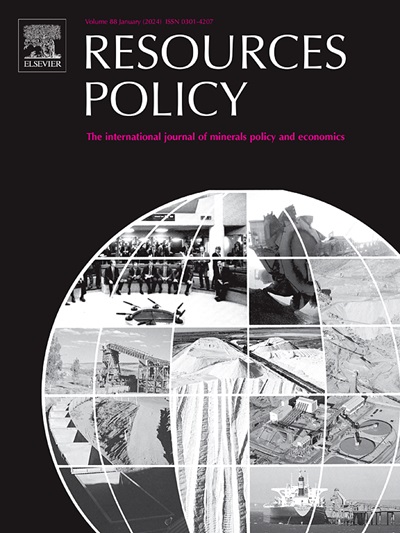露天矿中长期生产调度时空对齐的遗传算法
IF 10.2
2区 经济学
0 ENVIRONMENTAL STUDIES
引用次数: 0
摘要
露天矿的生产计划主要包括长期(LT)、中期(MT)和短期(ST)计划,这些计划通常是相互孤立的优化。然而,通过独立优化这些时间表,会出现连续时间表之间的时间和空间调度偏差,并可能导致采矿项目净现值(npv)降低。因此,集成这些进度表以改进进度表一致性是很重要的。因此,本文开发了一个混合整数规划(MIP)模型,该模型集成了LT和MT生产计划,与单独优化计划相比,可以改善LT和MT计划之间的计划一致性。采用遗传算法求解该模型,遗传算法是一种随机算法。结合MIP模型和GA方法在Geovia Surpac®区块模型上进行了测试,其NPV比单独LT计划高2.20%。在MineLib上使用相同的输入参数,通过将其结果与使用TopoSort启发式算法获得的最著名的可行线性规划(LP)松弛解进行比较,验证了该方法。对于Newman, Zuck Small和KD块模型,该方法产生的npv可比较,分别比前者低4.90%,前者高10.90%,后者低2.36%。然而,对于4个区块模型,该方法在LT和MT生产计划之间实现了100%的时间一致性,而孤立的时间表的时间偏差在86.22%至105.47%之间。因此,本文的贡献在于结合LT和MT生产计划之间的时空一致性,以实现MT地平线上的LT目标。本文章由计算机程序翻译,如有差异,请以英文原文为准。
A genetic algorithm for temporal and spatial alignment of long- and medium-term mine production scheduling for open-pit mines
Open-pit mine production scheduling essentially comprises long-term (LT), medium-term (MT) and short-term (ST) schedules, which have typically been optimized in isolation to each other. However, by independently optimizing these schedules, temporal and spatial scheduling misalignment between consecutive schedules occurs and can lead to lower mining project net present values (NPVs). Therefore, it is important to integrate these schedules for improved scheduling alignment. Accordingly, this paper developed a mixed integer programming (MIP) model that integrates LT and MT production schedules to improve scheduling alignment between LT and MT schedules compared to separately optimizing the schedules. The model was solved using a genetic algorithm (GA), which is a stochastic algorithm. The combined MIP model and GA approach was tested on a Geovia Surpac® block model and generated a 2.20 % higher NPV than for the isolated LT schedule. Using the same input parameters on MineLib, the approach was validated by comparing its results to the best-known feasible linear programming (LP) relaxation solutions obtained using a TopoSort heuristic algorithm. For the Newman, Zuck Small and KD block models, the approach generated comparable NPVs, which were 4.90 % lower, 10.90 % higher, and 2.36 % lower, respectively. However, for the four block models, the approach achieved 100 % temporal alignment between LT and MT production schedules, while the isolated schedules had temporal misalignment ranging between 86.22 % and 105.47 %. Therefore, this paper's contribution is on incorporating temporal and spatial alignment between LT and MT production schedules to achieve LT objectives at the MT horizon.
求助全文
通过发布文献求助,成功后即可免费获取论文全文。
去求助
来源期刊

Resources Policy
ENVIRONMENTAL STUDIES-
CiteScore
13.40
自引率
23.50%
发文量
602
审稿时长
69 days
期刊介绍:
Resources Policy is an international journal focused on the economics and policy aspects of mineral and fossil fuel extraction, production, and utilization. It targets individuals in academia, government, and industry. The journal seeks original research submissions analyzing public policy, economics, social science, geography, and finance in the fields of mining, non-fuel minerals, energy minerals, fossil fuels, and metals. Mineral economics topics covered include mineral market analysis, price analysis, project evaluation, mining and sustainable development, mineral resource rents, resource curse, mineral wealth and corruption, mineral taxation and regulation, strategic minerals and their supply, and the impact of mineral development on local communities and indigenous populations. The journal specifically excludes papers with agriculture, forestry, or fisheries as their primary focus.
 求助内容:
求助内容: 应助结果提醒方式:
应助结果提醒方式:


